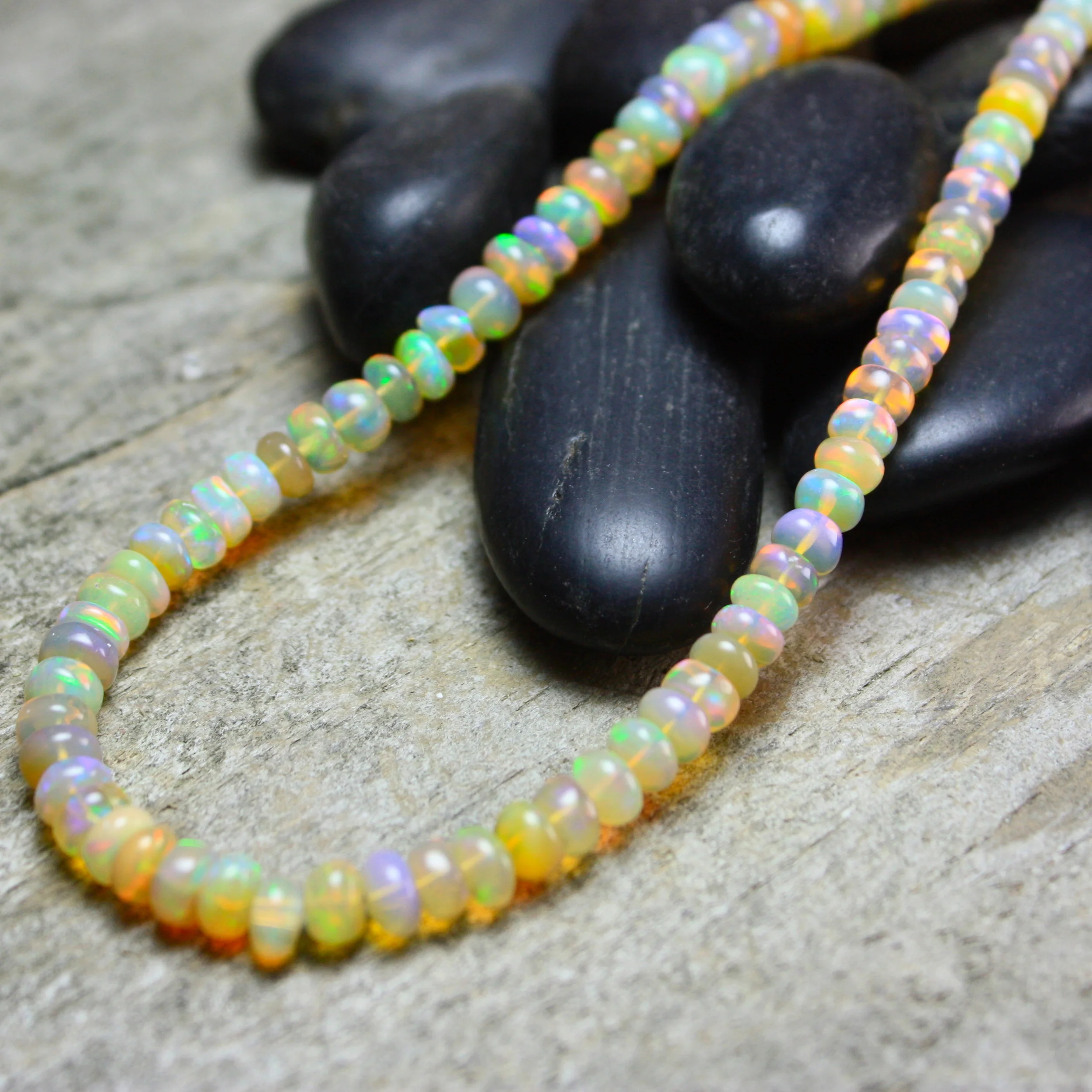Opal began forming on Earth 15 to 30 million years ago, during the tertiary period. Starting out as a liquid, it seeped through sedimentary layers of earth, settling within impervious clays. Over millions of years, the liquid slurry hardened, trapping water among its silica spheres in a unique pyramidical structure that diffracts light in a unique and especially beautiful way. There are two variety: precious opal, which shows flashes of “fire” or iridescence, depending on the angle of viewing and light; there is also common opal which is often opaque and displays no iridescence. The iridescence of precious opal is caused by the way the arrangement of tiny silica spheres, catches and refracts the available light.
Precious opals occur in a great range of color, opacities and iridescent qualities. White opal, black opal, fire opal, matrix opal, blue opal, Peruvian blue opal, pink opal, Mexican fire opal. About 95% of precious opal is mined in Australia, but different forms are found in places around the globe – from Peru to Africa .
Boulder opal is found in Queensland, Australia where precious opal forms in veins and patches within brown ironstone boulders. When the opal is mixed through the ironstone it is called matrix opal. Boulder opal is very durable due to the ironstone backing the opal forms on, and unlike most other opals it has very low water content and so it almost never cracks or crazes as it ages.
Peruvian Blue and Pink Opals are only found in the Andes mountains near San Patricio in northwestern Peru.
Mexican opal was born in Mexico’s ancient volcanoes of Mexico. Fire opal forms when water seeps into silica-rich lava, filling seams and hollows. Under heat and pressure, the silica forms a solid gel, trapping the remaining water within its structure. Small pebbles of fire opal are found embedded in lava flows, and the resulting stones glow with the warm colors of fire – reds and oranges and deep honey amber.
African opals are quite new on the market, having been mined only since about 1993. They range in color from palest yellow to a dark chocolate brown, and can have fascinating and beautiful snakeskin like patterns of iridescence. They’re found inside geodes in Ethiopia.
Metaphysical: The birthstone for Libras and October birthdays, opal aids inner beauty, faithfulness, and eyesight and helps recall past lives. The Peruvian blue opal has soft relaxing energies. Legend says that it takes the tension out of communication and helps ideas flow freely. It softens the impact of stress from the outside world and can help one to release the trauma of old wounds. It facilitates facing the future with a tranquil healing nature. This stone is reported to be good for quieting the mind and as an aid to sleep. Its color helps it resonate with the 5th or throat chakra, supporting work towards open communication.


